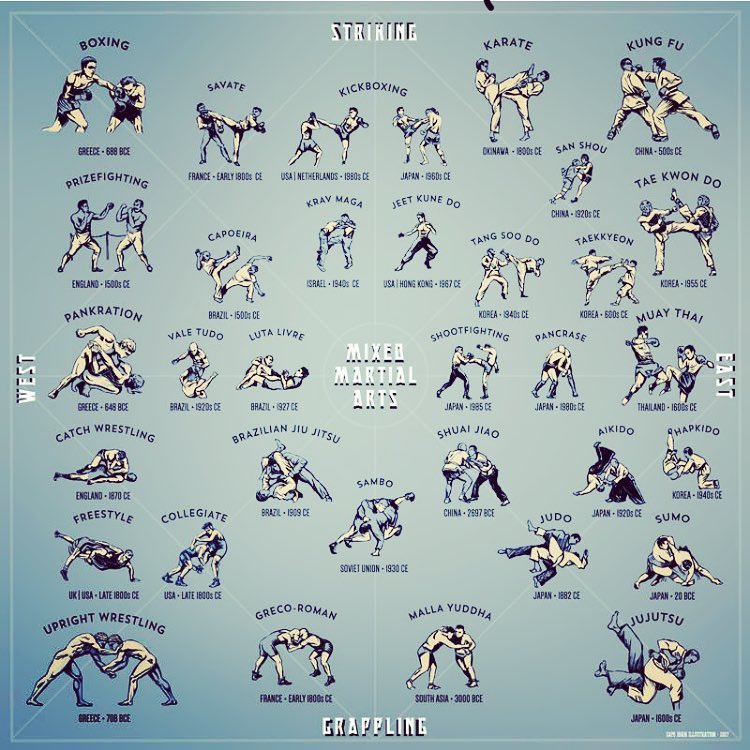Venture Into The Engaging Narrative Of Martial Arts, Where Old Personalizeds Converge With Contemporary Techniques, Revealing Tricks That Actively Affect The Contemporary Fight Environment
Venture Into The Engaging Narrative Of Martial Arts, Where Old Personalizeds Converge With Contemporary Techniques, Revealing Tricks That Actively Affect The Contemporary Fight Environment
Blog Article
Content Created By-Wilcox Odonnell
Martial arts have a remarkable history that extends centuries and continents. You may discover it appealing just how old techniques like Shuai Jiao and Kalaripayattu laid the groundwork for modern fight methods. These techniques not just highlight physical abilities yet additionally show the cultures that birthed them. As martial arts belt order explore their advancement, take into consideration just how globalization has transformed these typical forms right into crossbreed styles. What influences do you think have shaped today's martial arts landscape?
Ancient Martial arts: The Structures of Battle
As you explore the globe of old martial arts, you'll find the abundant structures that shaped battle methods throughout cultures. Very early practices focused on Self-Defense and survival, frequently including strikes, hurting, and weaponry.
In old China, as an example, methods like Shuai Jiao stressed throws and joint locks, while India's Kalaripayattu showcased agility and fluid motion. Japanese samurai developed Kenjutsu, a polished swordsmanship that highlighted self-control and strategy.
These martial arts served not just for battle but also as a means of personal development, instilling values like regard and determination. The mixing of these methods gradually prepared for the varied martial arts you see today, each showing the special approaches and demands of its culture.
The Social Influence on Martial Arts Growth
While martial arts frequently reflect the functional requirements of a culture, they likewise embody the social values and ideas of their beginnings. When you discover different martial arts, you'll discover just how they're affected by religion, ideology, and social norms.
As learn here , the focus on respect and technique in Japanese martial arts stems from Zen Buddhism and samurai society. On the other hand, Brazilian Jiu-Jitsu promotes versatility and strategy, formed by the need for efficiency in a diverse, modern atmosphere.
You may locate that the routines, uniforms, and training methods mirror a neighborhood's history and identity. By recognizing these cultural impacts, you deepen your recognition of martial arts and their role in shaping human experiences across the globe.
Modern Adaptations and the Globalization of Martial arts
Martial arts have changed substantially in current years, adapting to modern culture and worldwide influences. You'll observe that typical forms have combined with modern-day techniques, producing hybrid styles like mixed martial arts. These adjustments satisfy diverse audiences, making martial arts obtainable and appealing worldwide.
With the rise of social media and electronic systems, you can find tutorials and competitors from all edges of the world, damaging geographical obstacles. This globalization has caused a shared recognition for various disciplines, from Brazilian Jiu-Jitsu to Taekwondo.
As you engage with these arts, you'll realize they're not almost fight; they promote fitness, technique, and mental well-being.
Eventually, modern-day adaptations have enhanced the martial arts landscape, making it a dynamic and developing method.
Conclusion
In discovering the background and advancement of martial arts, you discover a fascinating mix of strategies, societies, and ideologies. From old techniques like Shuai Jiao and Kalaripayattu to the modern-day adaptability seen in MMA, martial arts show humankind's quest for Self-Defense and personal development. As you involve with these methods, you not only obtain skills but likewise a deeper gratitude for the varied traditions that shape our globe today. So, continue your trip and accept the art of combat!
